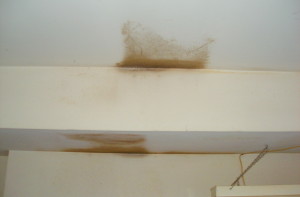
How to Check for Insulation In Exterior Walls From Washington, DC Area Drywall Experts
It’s February 8. It took a while to get cold this winter – back in November, it was balmy enough that you started to wonder if maybe there was something to the whole global warming theory. But by February 8, it has officially been cold for over a month and a half. You haven’t spent much time in either of your downstairs bedrooms for about as long. Never mind that the larger of the two bedrooms is supposed to be your office; you’ve been finding yourself curled up on the couch in the living room with your laptop on your days to work from home. The other bedroom – a guest room with beautiful windows that you like to read in during the summer – is basically a glorified closet at this point, the bed piled with extra toilet paper from the Costco sale and unwanted Christmas gifts that you haven’t found happy homes for yet.
The problem is that those two rooms are just impossible to get warm. Never mind that your gas bill is over $200, and the upper floor of your cape cod is unbearably hot unless you dress like you’re at the beach; those two bedrooms linger in the low 60s/high 50s no matter how hard you crank the heat.
If you live in an older home, your problem may very well be that the exterior walls aren’t insulated. Ideally, in between the exterior particleboard and the interior drywall, you should have a layer of insulation. It could be batts of fiberglass (the fluffy pink stuff) or rock wool, or it could be loose fill – a kind of confetti of paper, fiberglass, or rock wool that fills up all the cavities in between the “bread” of the interior and exterior boarding – or it could be sprayed-in foam. With something other than dead air in between the layers of wall, your rooms should hold their heat even against the coldest weather. Without such a buffering layer, however, your rooms are probably doomed to stay chilly until the earth circles around its orbit far enough to make the warm weather come back.
How can you tell if your walls have insulation in them? The way your room holds heat can give you a strong clue (i.e., if it doesn’t hold its heat, it’s probably not insulated), but if you want to know for sure, the only way is to open the drywall and take a look. Ideally, you want to remove drywall in a space where it will do the least damage to the look of the room; around a piece of window trim or a light fixture. If you remove only a small amount of drywall, it will be tricky to get a good look, but if you remove a larger piece, you will need to have it replaced. Obviously, only the exterior walls need to be checked; there is no purpose to insulating the interior walls, unless you are concerned about soundproofing. If the insulation is in there, you will be able to see it.
And if it isn’t? You might want to consider adding insulation. It can be blown or sprayed in through small cracks cut in your drywall, or your drywall can be removed completely so that batting insulation can be installed. It all depends on how much of a procedure you are willing to go through, and how efficient you want your newly insulated walls to be – batting insulation tends to be more efficient, but it costs more and takes longer to install. The crew you hire to install your new insulation should be certified and trained to work with both insulation and drywall, and should be able to advise you on your options. And when your new insulation is finally installed (or when you cut a hole in your drywall and find that there’s already some in there, and that your room is cold because there’s something wrong with your HVAC), and you decide you need some patching up and a new paint job, give Blue Door Painters a call. That freezing cold bedroom could turn into your new favorite winter den.






